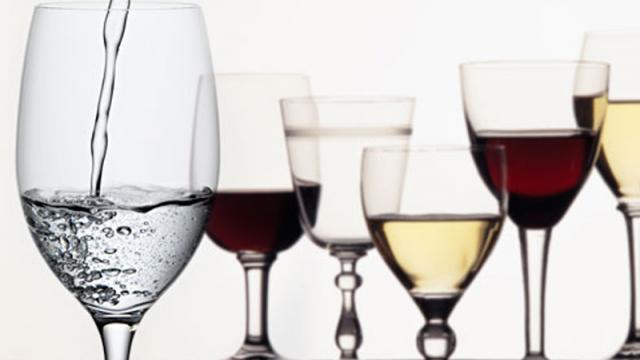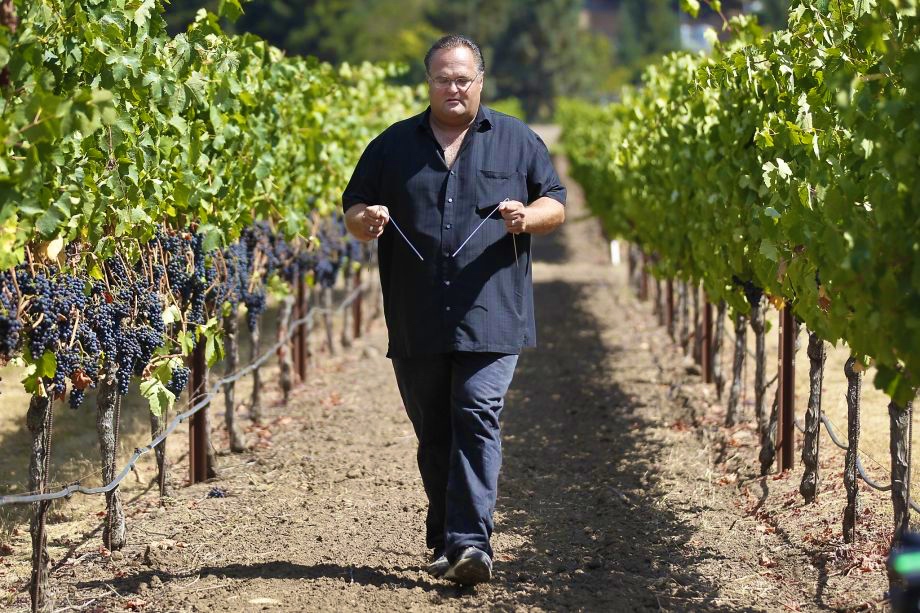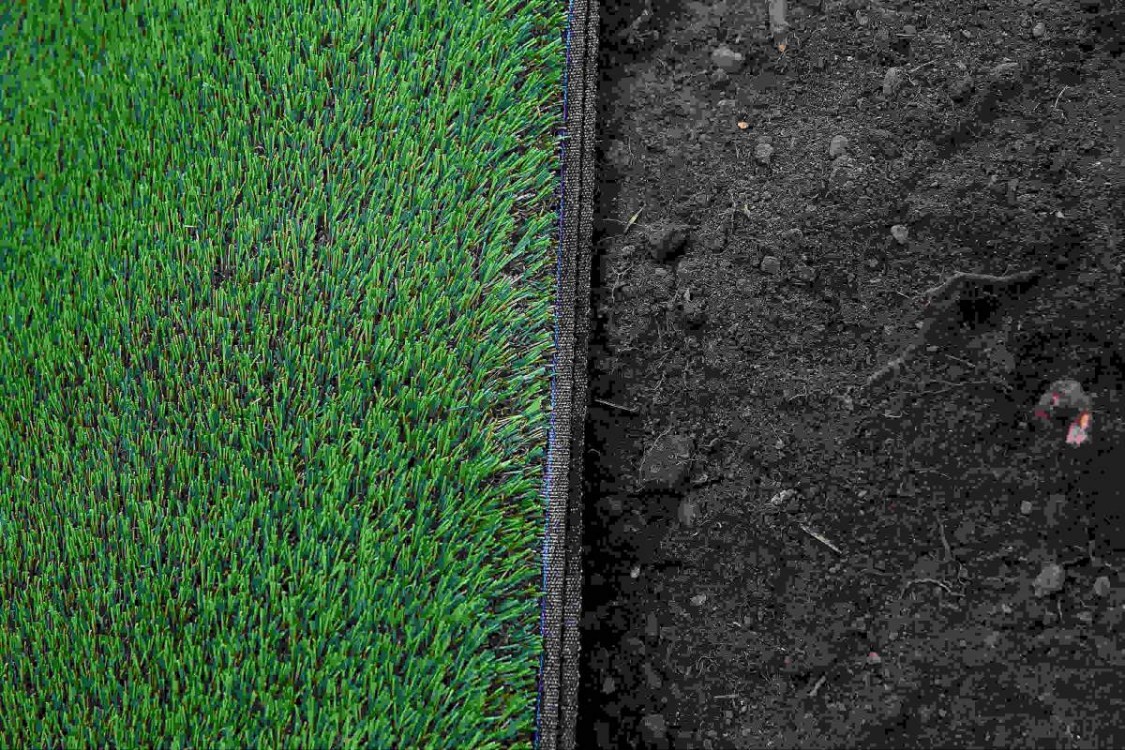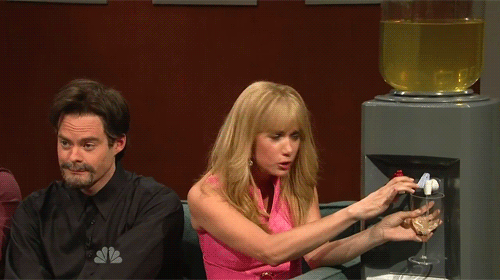
“California Puts Mandatory Curbs on Water Use” reports the long frontpage New York Times article on April 2. “Steps to Confront Record-Setting Drought,” the sub-headline reads. The article describes Gov. Jerry Brown’s executive order – California’s first time restricting water use.
A 25% reduction of water use over the next year is required of residents, golf courses, cemeteries, and many businesses. But wait. “Owners of large farms…will not fall under the 25% guideline.”
Agricultural enterprises can continue to dig deep wells into our common water table and extract as much of our limited water supply as they want, for free. This includes vineyards. It takes around 30 gallons of water to make one glass of wine. That results in extensive water use by an industry that has an agricultural component but is mainly an industrial, commercial bottling operation, often in a rural area zoned for other things. This sounds like a double standard.
“California has about one year of water left. Will you ration now?” a recent Los Angeles Times article asks. Many residents have been rationing. We’re still waiting for answers to this question from large wineries.
The Sierra Nevada’s 400-mile mountain range reveals the seriousness of the problem. California’s largest reservoir holds an average of 15 million acre-feet of water, providing 30% of the water for farms and cities. It’s been four years since the snowpack was normal. The current estimate for 2015 is 8% of capacity, the only time it has been a single digit.
Why should residents conserve water when the large wineries here in Sonoma County and neighboring Napa County are able to extract as much water as they want, without paying for it or having to conserve it? Different rules apply to different folks.
“Experts say ag exception may defeat program,” reads an Associated Press headline. “Some water experts and economists are dubious the crackdown will succeed. Brown’s order exempts agriculture, which consumes 80% of all the water that Californians use,” the AP article notes.
In a Time of Scarcity
“In times of scarcity, human nature is to do one’s share if you think others are making similar sacrifices,” the AP story quotes Jonas Minton, a former senior state water official. “When it appears others are taking more than their share, it can be reduced to every person for themselves.”
The problem is, Big Wine does not do its fair share of making sacrifices. Many think that large wineries take far more than their share of the commons, especially water and land. They also pollute the air with their truck-in grapes/truck-out wine industrial operations. As climate change heats up, its warming contributes to less snowpack and hence less water.
“$1 billion drought aid plan unveiled,” headlines a Los Angeles Times article. The plan calls for “personal responsibility.” What about corporate responsibility?
“There is something fundamentally unjust where one segment of the population is given unrestrained access to a vital natural and shared resource while another segment is constrained,” said Geoff Ellsworth of Napa County’s Vision 2050, a coalition of a dozen groups challenging winery over-development in rural areas. Ellsworth raises ethical questions about the economics that drive the wine industry to horde precious, limited resources, such as water.
“Without proper protections a temptation is created to take more than one's share of a common shared resource. If water is allowed to be further commodified and controlled by private enterprise then citizens risk becoming collateral damage in a business war,” Ellsworth added. He was raised in a Napa wine family.
Investors from outside California and even beyond the U.S. own many of the large wineries. For example, a Chinese firm recently paid $41 million for land in Sonoma County permitted for a winery and resort. A wine rush into California’s wine industry appears to be happening. It’s a collision course.
"Wineries have been issued permits for 100,000-500,000 case production facilities without adequate investigation or mapping of water resources,” writes Linda Kay Hale from the Valley of the Moon Alliance (VOTMA). “Wineries are allowed to drill 1,000 foot wells near creeks because they are on agricultural land. We are exporting our water in the form of wine." VOTMA has been mapping development and growth in Sonoma Valley for 10 years to protect the Scenic Corridor and to address critical open space buffers, water, and safety issues.
California is the nation’s most productive agricultural state and its wine industry provides much of the U.S.’s wine, for both national and international consumption. To address our growing water scarcity problem, Gov. Brown should focus on Big Wine and Big Ag and not continue their free ride.
After four years of drought and not much relief likely, the water scarcity situation is serious. Gov. Brown’s solution does not solve the problem, because it does not address Big Wine and Big Ag.
Locals Fight Back
Water wars are not new to California. The current oil wars in the Middle East are bad enough. Wait until we get to more intense water wars. Humans can survive without oil, and have for centuries, but not without water.
Here in the historic, natural Redwood Empire – which the wine industry re-branded as the commercial “Wine Country” – a backlash against the larger, corporate wineries grows.
Wineries must obtain permits for a new winery or increased production; they are routinely approved. This year Sonoma’s Board of Zoning Appeals finally turned down one – celebrity chef’s Guy Fieri’s proposal. 150 residents showed up to oppose it.
On April 2 over 100 residents, mainly neighbors, lobbied against Hop Kiln Winery’s application to increase their production, buildings, and events. Though the proposal was eventually approved, residents appreciated that it was down-sized.
“One thing that stuck me at the Napa March 10th Board of Supervisors meeting is that multiple constituencies are beginning to understand the consequences of approving highly impactful projects or projects on sub-optimal parcels – and impacts from non-compliance,” wrote Judith Olney from the Westside neighborhood group, which has been challenging Hop Kiln.
“The Napa grower groups understand that they need to be part of the compliance discussion. Napa Valley Grapegrowers, Winegrowers, and Vintners wrote, ‘We believe that unrealistic winery applications, shored up by the excessive use of variances, should be denied.’” Olney added, “We are all in agreement that vineyard development of steep, timbered watershed lands, where water is scarce, should be denied.”
The Sebastopol City Council on Feb. 3 voted 5-0 to recommend to Sonoma County that they reject the application by Napa County’s Wagner wine family for the huge Dairyman Winery and Distillery. They want to locate on the fast-moving, two-lane Highway 12 between small town Sebastopol and Sonoma County’s capital, Santa Rosa. The final decision is in the hands of the County. Eighteen people testified against the application and only the applicant favored it.
As of press time, over 250 letters during two months opposed the Dairyman application. They came from many neighbors, individuals, and groups such as Sonoma County Conservation Action, Laguna de Santa Rosa Foundation, Preserve Rural Sonoma County, Sebastopol Water Information Group, Western Sonoma County Rural Alliance, the Sonoma County Bicycle Coalition, Sonoma County Water Coalition, and Apple Roots.
"The proposed Dairyman Winery/Event Center would use over one billion gallons of water annually in their production of 500,000 cases of wine and 250,000 gallons of brandy,” said Padi Selwyn of Preserve Rural Sonoma County, a new group organized to fight winery developments in inappropriate rural areas.
“Because the 25% reduction in water use doesn't apply to farms at this time, residents will be saving water so that a winery operator and visitors can use it for profit and recreation. People are angry. It is not justifiable to expect residents to let their lawns go brown and curtail water usage while allowing wineries to expand and new ones built. Even a significant drop in residential water use won't help as much as a small reduction in water usage by farmers in California, who use 80% of the state's water resources,” Selwyn added.
Dry Farming – Part of the Solution
Conventionally-grown grapes are water-intensive, but they do not need to be. Most grape-growers in the U.S., until the 1970s, and currently many in Europe, practice dry farming. The wine tastes better, though there may not be as much production.
“Now is the time to look to dry-farming again,” writes John Haggard in his monthly “Wine Banter” column in the April Sonoma County Gazette. He owns Sophie’s Cellars. Many grape-growers and wine-makers benefit the region and are concerned with playing their part to respond to the drought in a socially responsible way. “With the drought that we’re currently in, perhaps (dry farming) is the direction we might move,” Haggard continues.
“Vineyards were never watered before l970 in our county,” writes Janus Matthes, of the Sonoma County Water Coalition and the Community Alliance with Family Farmers. Matthes suggests labeling dry farmed wines in order “to support true water sustainability.”
“We [in Napa] are drawing 1.2 billion gallons of water and putting it on vines that don’t really need it,” Frog’s Leap Winery owner John Williams is quoted as saying in the local daily Press Democrat. “The entire valley was dry-farmed for 100 years until 1976, when the first drip irrigation systems were installed,” Williams said.
Dry farming would help develop sustainable practices, as would being organic. However, it would not be enough to deal with the serious water shortage and other problems. For example, too many natural forests are ripped out to be replaced by artificial vineyards and the quality of life in many rural areas is damaged by these industrial bottling factories. Animals, plants, and nature itself suffer from the practices of many vineyards and wineries.
Our Limited Water Future
The wine industry used to be seen as a darling in Sonoma County, but from reading letters to the Press Democrat editor, that has changed. Guy Erdman of Forestville suggests an examination “of the blind infatuation we have had for the wine industry,” which he describes as “water-guzzling” with “unregulated water consumption.”
Erdman mentions specific wineries that continue the dry farming tradition, such as Benzinger in Glen Ellen, Bernier in Dry Creek, and Battaglini in the Russian River Valley. “Will it be humans or grapes?” Erdman asks. In Napa County, wineries that dry farm include Dominus and Napanook.
In another letter to the PD, Ed Peoples criticizes “the spread of so many vineyards around the county sucking up all the water from the river and the aquifers.” He suggests “that the county require the removal of two-thirds of the vineyards.” That will not happen, since the wine industry rules the re-branded “Wine Country.” However, the call for a moratorium on new wineries has been increasing.
“We've gone from an agriculture that benefitted all, to a mono-culture that benefits a few,” said Sebastopol grape-grower Bill Shortridge. “We have 70,000 (and growing) Sonoma County acres planted with wine grapes, and only 12,000 acres of food crops.” So much for the diversity that nature relies upon.
Big Wine and Big Ag. tend to farm against nature, rather than with it. Its practices are catching up with Big Wine and Big Ag. California ag’s 2014 drought-induced losses were $1.5 billion, according to University of California at Davis scientists. It is headed for at least a $1 billion dollar loss this year and again next year.
As the Vineyard Wine Watch website says in its tagline: "You can make water into wine, but you can't make wine into water." The question now is: will California choose its grapes or its people.
3 WAYS TO SHOW YOUR SUPPORT
- Log in to post comments















